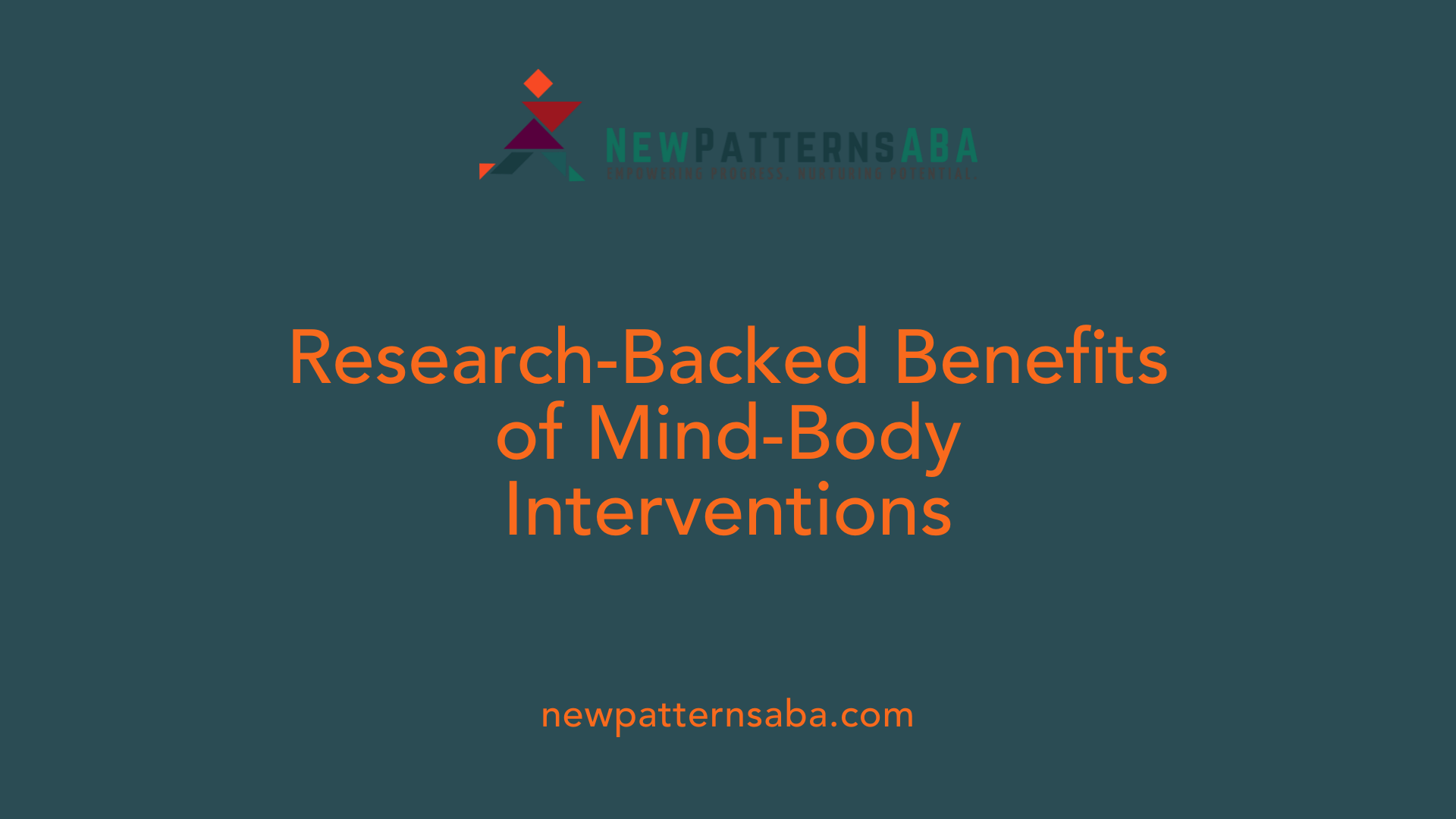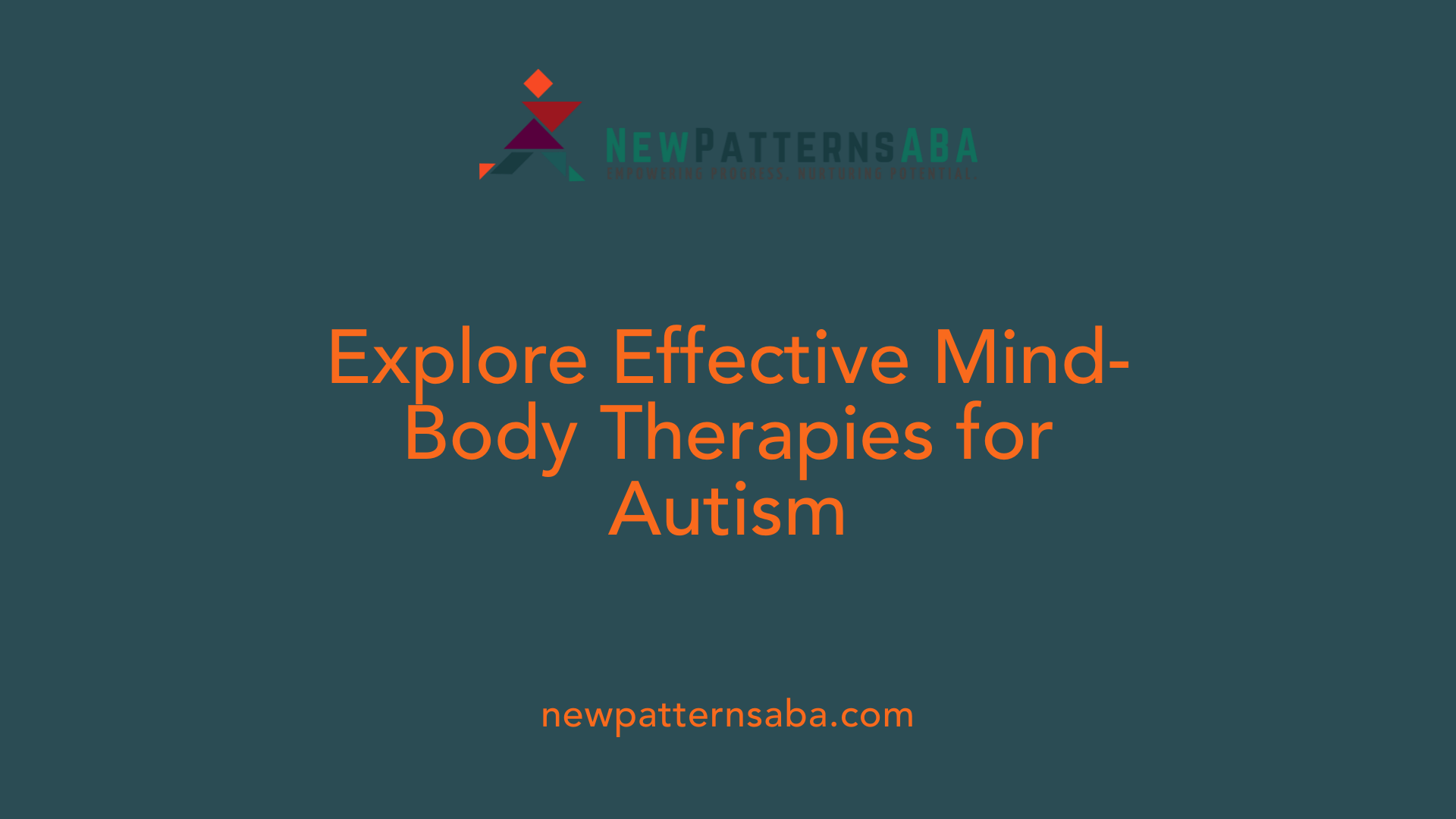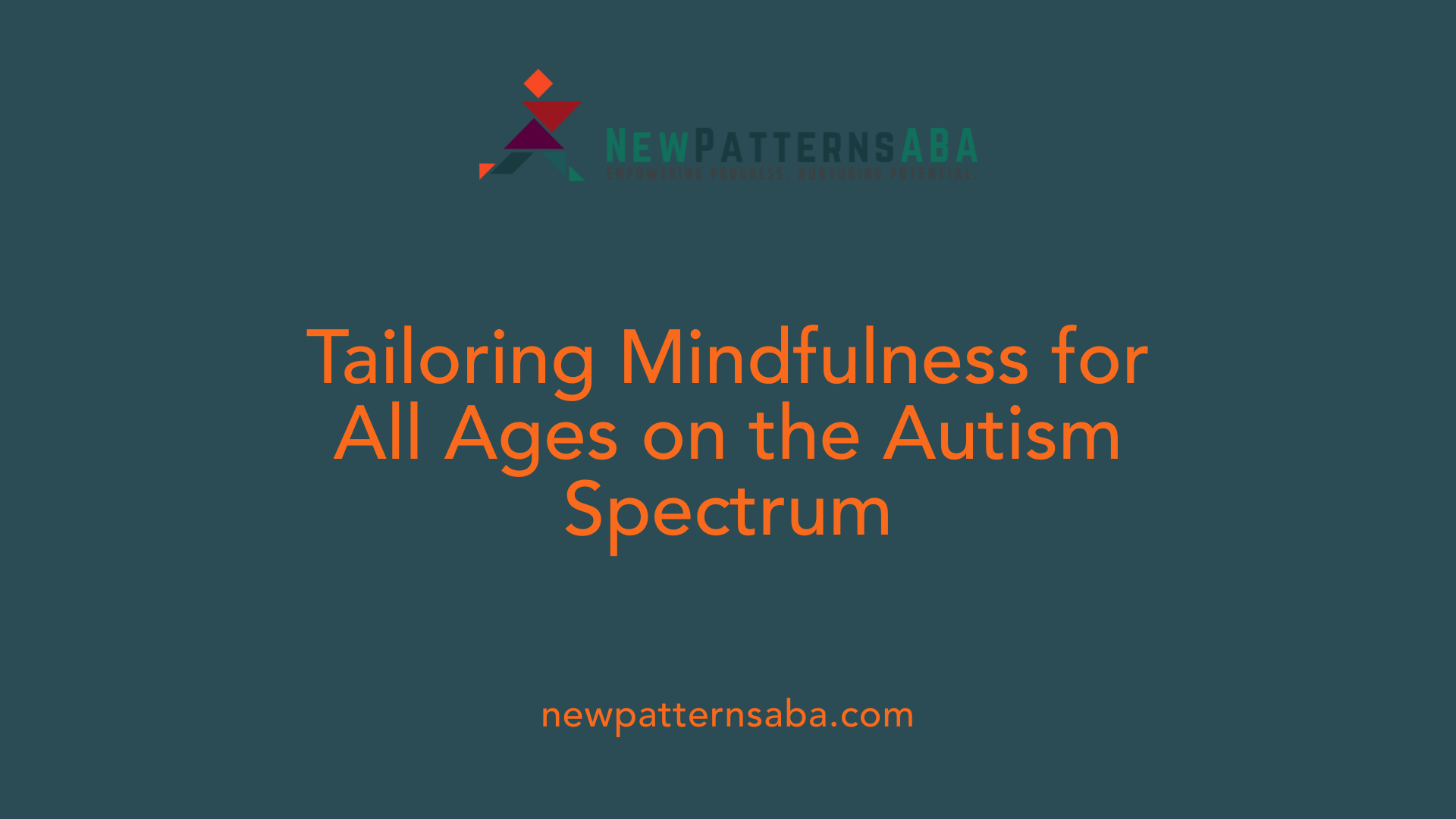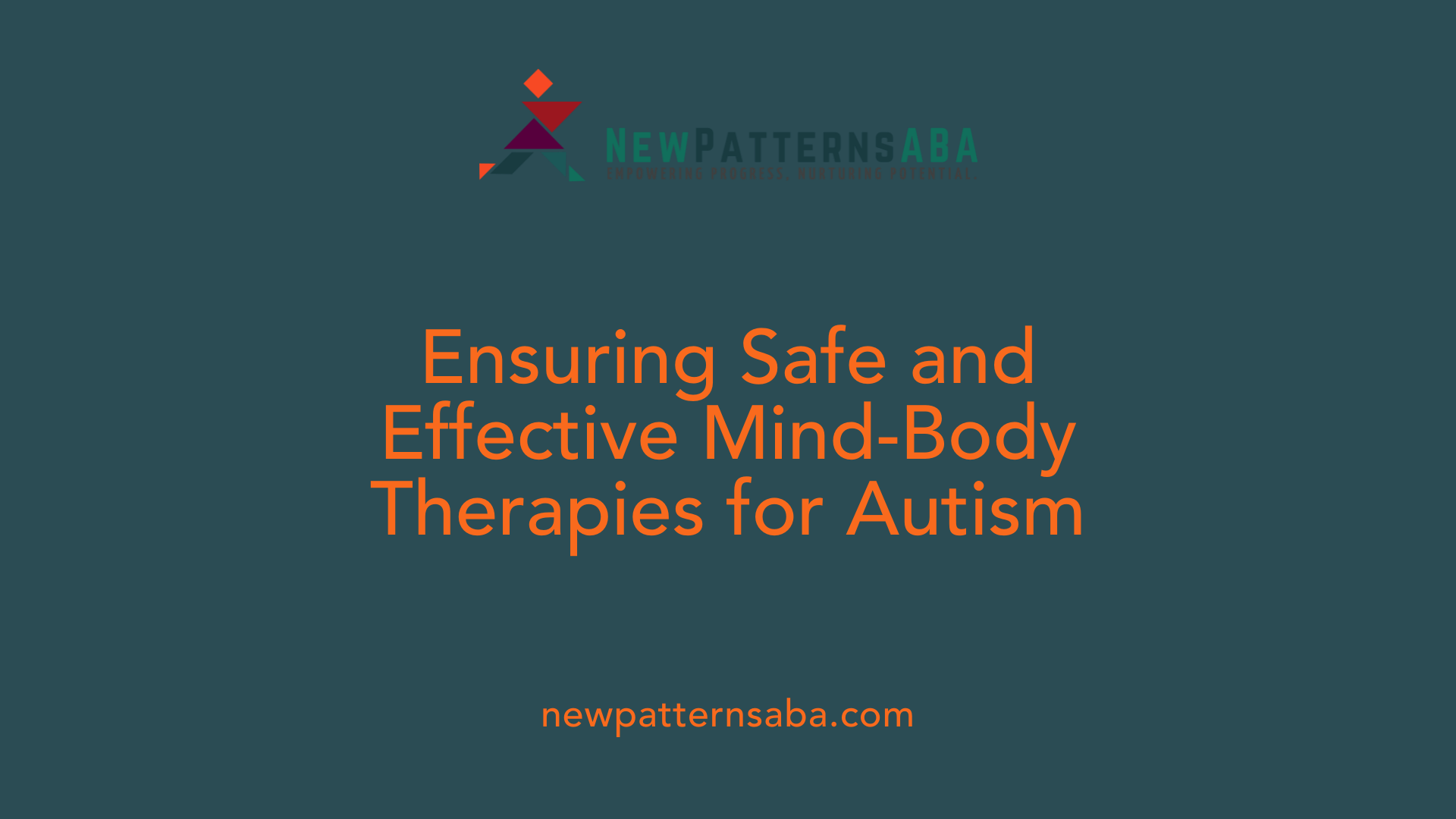Harnessing Mind-Body Techniques to Alleviate Stress in Autism
Understanding the Role of Mind-Body Practices in Autism Management
Stress is a common challenge faced by individuals with autism spectrum disorder (ASD), impacting their emotional, behavioral, and social well-being. In recent years, a variety of mind-body practices have emerged as effective, non-pharmacological strategies to help manage and reduce stress, improve emotional regulation, and enhance overall quality of life for those on the spectrum. This article explores the diverse range of evidence-based mind-body interventions, practical implementation strategies, and success stories that underscore their significance in autism care.
Overview of Mind-Body Practices for Autism Stress Reduction
What are the effective mind-body practices for reducing stress in autism?
Mind–body therapies have gained recognition as valuable approaches for managing stress and emotional challenges among individuals with autism spectrum disorder (ASD). The most commonly studied practices include mindfulness meditation, yoga, Tai Chi, Nei Yang Gong, and acceptance commitment therapy. These practices focus on promoting relaxation, enhancing self-regulation, and improving overall mental health.
Mindfulness, in particular, has shown promising results. It involves paying attention to the present moment without judgment and can include activities such as breathing exercises, guided imagery, sensory grounding, and body scans. Yoga and Tai Chi incorporate physical movement, breathing, and mindfulness, fostering emotional balance and sensory integration.
Types of therapies used in studies
Research studies have employed various mind-body interventions tailored to the needs of autistic individuals. For example, mindfulness practices often include activities like sound meditation (chime listening), glitter jars for sensory calmness, and mindful walking. Acceptance commitment therapy helps individuals accept their thoughts and feelings while engaging in valued activities.
Other interventions, such as Nei Yang Gong—a gentle Chinese practice focusing on breathing and movement—have also been explored. These therapies are often adapted to suit sensory sensitivities common in ASD, such as using less abstract language, incorporating sensory-friendly exercises, and providing predictable routines.
Targeted outcomes such as behavior, psychological symptoms, and quality of life
The primary goals of these therapies are to address behavioral issues, reduce psychological symptoms like anxiety and depression, and improve quality of life for both individuals with autism and their families. Many studies indicated positive outcomes, including reductions in maladaptive behaviors, such as tantrums and aggression, and improvements in self-control.
Particularly in adults with ASD, interventions such as mindfulness and meditation have shown effectiveness in easing depression and anxiety. Additionally, caregiver-focused mindfulness programs have contributed to reduced caregiver stress and better emotional regulation.
Children and adolescents often exhibit decreased depression and stress, along with better social communication and emotional regulation. These therapies have also supported improvements in cognitive flexibility and social responsiveness.
Adaptations made to improve accessibility
To maximize efficacy and accessibility, many studies have modified standard mindfulness and other mind–body practices. Adjustments may include simplifying language, creating sensory-friendly environments, using visual aids like social stories or visual schedules, and employing digital tools such as mindfulness apps tailored for autism.
Activities like sensory breaks, the use of weighted blankets, noise-canceling headphones, and visual cues help individuals with ASD engage with these practices comfortably. Structured routines and predictable schedules further support engagement.
Safety and limitations
Most studies report no adverse events linked to these therapies, suggesting they are generally safe. However, it is noted that many studies have limitations, such as small sample sizes, reliance on self-reported measures, and heterogeneity in intervention protocols. Therefore, continued research with higher methodological quality is encouraged.
In summary, mindfulness and other mind–body therapies offer promising, adaptable tools for reducing stress, improving emotional regulation, and enhancing the overall well-being of individuals with autism. Personalization and sensory considerations are critical to their success, emphasizing the importance of tailored approaches.
| Therapy Type | Focus Areas | Adaptations / Tools | Reported Outcomes |
|---|---|---|---|
| Mindfulness | Stress, anxiety, emotional regulation | Sensory grounding, visual aids, guided visualizations | Decreased anxiety, depression, behavioral issues |
| Yoga/Tai Chi | Body awareness, relaxation | Sensory-friendly environments, simplified routines | Improved emotional balance, self-control |
| Nei Yang Gong | Breathing, movement | Gentle exercises, sensory modifications | Calmer demeanor, better sensory processing |
| Acceptance Commitment Therapy | Thought acceptance, values-driven action | Structured sessions, visual supports | Increased emotional resilience, reduced distress |
Understanding these therapies' potential benefits and limitations can help clinicians, caregivers, and individuals tailor interventions that suit unique needs and preferences, fostering a safer and more effective approach to managing autism-related stress and challenges.
Evidence Supporting Mind-Body Therapies for Autism

What evidence-based benefits of mindfulness and similar practices exist for autism stress management?
Research indicates that mindfulness and comparable mind–body practices offer significant benefits in managing stress and emotional challenges associated with autism spectrum disorder (ASD). Multiple studies have shown that these therapies can reduce symptoms such as anxiety, depression, and emotional reactivity in individuals with ASD.
Programs like Mindfulness-Based Stress Reduction (MBSR), MYmind, and MindfulTEA have demonstrated positive effects, including improved emotional regulation, enhanced social interaction, and better overall quality of life. Evidence from randomized controlled trials and longitudinal studies suggests that these benefits can persist beyond the intervention period, helping individuals develop coping strategies for stress.
Despite the varying study quality, the collected data support the feasibility of implementing mindfulness practices tailored for autism. These interventions are generally safe, with most studies reporting no adverse events, making them a practical addition to traditional therapies. In summary, mindfulness-based approaches offer an evidence-backed means of alleviating stress and improving mental health in people with ASD.
Are there success stories or resources related to the effectiveness of mind-body interventions in reducing stress for individuals with autism?
Yes, numerous resources and success stories highlight the positive impact of mind–body interventions for stress reduction in individuals with autism. A review of 16 studies, including randomized controlled trials, cohort, and quasi-experimental designs, provides strong evidence that practices such as mindfulness, meditation, yoga, and acceptance commitment therapy (ACT) can alleviate psychological symptoms like anxiety, depression, and behavioral difficulties.
For example, adults with ASD participating in mindfulness programs have experienced notable reductions in depression, anxiety, and maladaptive behaviors. Many of these programs are adapted to meet the sensory and cognitive needs of individuals with autism—for instance, by simplifying language, incorporating sensory-friendly activities, and reducing abstract concepts.
Parents and caregivers also report benefits from mindfulness-based interventions like Mindful Parenting, which can decrease their stress levels and improve their ability to support their loved ones. These success stories are supported by ongoing research and practical implementations, demonstrating that mind–body therapies can serve as valuable tools in the holistic care of individuals with ASD.
Overview of study designs, populations, and outcomes
| Study Type | Number of Studies | Sample Size Range | Age Range | Main Focus | Noted Outcomes | Safety Reported |
|---|---|---|---|---|---|---|
| Randomized Controlled Trials (RCTs) | 3 | 10-50 participants | 2.5-65 years | Psychological and behavioral improvements | Reduction in depression, anxiety, maladaptive behaviors | Few adverse events reported |
| Quasi-experimental studies | 4 | 5-40 participants | Varied | Behavior, social skills, stress reduction | Behavioral improvements, enhanced social skills | Limited adverse event reporting |
| Cohort and multiple-baseline studies | 9 | 3-50 participants | 2.5-65 years | Quality of life, parental outcomes | Improved quality of life, reduced parental stress | Mostly no adverse events |
Final thoughts
The current body of research supports the use of mind–body therapies as a safe and effective adjunct in managing stress and improving functioning in individuals with ASD. Although many studies are small and reliant on self-reporting, the positive trends are promising.
Further high-quality, large-scale studies are needed to robustly confirm these benefits. Nonetheless, the existing evidence underlines the potential of mindfulness and similar practices to enrich conventional autism treatments and empower individuals and their support networks.
This growing evidence base encourages the integration of adaptable, accessible mind–body techniques into comprehensive autism care plans, ultimately aiming to improve emotional well-being and daily functioning.
Types of Suitable Mind-Body Therapies

What types of mind-body therapies are suitable for individuals with autism?
A variety of mind-body practices have been explored for their potential benefits in supporting individuals with autism spectrum disorder (ASD). Notable among these are mindfulness, meditation, yoga, Nei Yang Gong, acceptance and commitment therapy (ACT), and movement-based practices such as dance or movement therapy.
Mindfulness-based interventions (MBIs) are especially prominent in research and practice. These involve techniques like body scans, guided relaxation, and breathing exercises designed to promote present-moment awareness and emotional regulation. Meditation, including sound meditation and guided imagery, also contributes to reducing stress and enhancing focus.
Yoga and Nei Yang Gong incorporate physical postures, breathing, and sensory practices that can be modified for sensory sensitivities. These adaptations include simplified instructions, reduced sensory stimuli, and using tangible props to facilitate engagement.
Acceptance and commitment therapy emphasizes embracing feelings without judgment and committing to values-driven actions. It has been tailored to meet the communication and sensory needs of autistic individuals.
Movement-based therapies like dance/movement therapy focus on expressive movement to improve emotional and social skills and can be integrated with other mindfulness practices.
How are these therapies adapted for accessibility and sensory sensitivities?
Recognizing the sensory processing challenges faced by many with ASD, practitioners often modify these interventions to enhance accessibility. Common adaptations include:
- Using concrete, straightforward language and avoiding abstract concepts.
- Incorporating sensory-sensitive exercises, such as gentle movement or calming visual stimuli.
- Shortening session durations to prevent fatigue.
- Providing sensory tools like glitter jars, weighted blankets, or calming noise-canceling headphones.
- Creating predictable routines with visual schedules and cues.
Such modifications aim to make these practices more engaging and less overwhelming, increasing their effectiveness and enjoyment for individuals with ASD.
What are the potential benefits of mind-body therapies?
Research indicates that these therapies can lead to significant improvements in mental health and behavioral outcomes.
- Anxiety and Depression: Many studies report reductions in symptoms of anxiety and depression, particularly in adults with ASD, through mindfulness and meditation.
- Behavioral Improvements: Decreases in maladaptive behaviors, such as aggression or self-injury, and enhancements in self-control and emotional regulation have been observed.
- Quality of Life: Interventions focusing on relaxation, social connection, and bodily awareness contribute to better overall well-being.
- Stress Reduction: Caregivers and individuals report feeling less stressed and more equipped to handle sensory overloads.
While the overall research quality varies, the emerging evidence supports the inclusion of tailored mind-body practices as complementary approaches in autism support strategies.
Implementation Strategies in Practice
How can caregivers and educators implement stress reduction techniques for individuals with autism?
Caregivers and educators play a vital role in fostering environments that support emotional regulation and reduce stress for individuals with autism. One of the most effective approaches is creating structured settings with visual schedules. These visual tools help individuals anticipate upcoming activities, thus decreasing anxiety related to unpredictability. Clear expectations and predictable routines provide a sense of security, which is especially beneficial during transitions or stressful situations.
Incorporating mindfulness activities into daily routines can further support emotional well-being. Simple practices like deep breathing exercises, mindful movement such as yoga, or sensory techniques using tools like glitter jars or tactile toys can help manage stress. For example, guiding a child through a breathing exercise or using sensory tools during moments of distress can promote calmness and self-awareness.
Understanding and addressing unique stress triggers is crucial. Some individuals may be sensitive to bright lights or loud noises, while others might find social interactions overwhelming. Making adjustments like dimming lights, creating quiet sensory spaces, or using noise-canceling headphones can make a significant difference.
Technology also offers practical support. Apps like the Stress Autism Mate (SAM) assist adults with autism in monitoring stress levels and practicing coping strategies. These digital tools can be incorporated into daily routines to provide real-time stress management support.
Combining these strategies—structured environments, personalized mindfulness activities, sensory considerations, and technological aids—can help reduce anxiety and improve overall functioning. Regular training for caregivers and educators on autism-specific stress management techniques ensures sustained and effective implementation. Ultimately, a compassionate, informed approach tailored to individual needs fosters resilience and enhances quality of life for people with autism.
Special Considerations for Autistic Adults and Children

What are the benefits and challenges of mindfulness practices for autistic adults?
Mindfulness practices can offer significant advantages for autistic adults by improving emotional regulation, reducing feelings of anxiety and stress, and helping manage sensory overloads and dissociative episodes. These practices foster greater awareness of bodily sensations, thoughts, and emotions, which can translate into increased self-understanding and a calmer mental state.
However, traditional mindfulness techniques often pose challenges due to sensory sensitivities, difficulties understanding abstract concepts, and the necessity for routine and structured approaches. Many autistic adults benefit from adaptations such as sensory-based exercises, guided visualizations, movement, and grounding strategies tailored to their sensory preferences and cognitive needs.
Effective offerings include activities like sensory-focused breathing exercises, tactile mindfulness, and visual grounding tools. These modifications help make the practices more accessible and engaging, thereby increasing their potential benefits.
With personalized routines and appropriate customization, mindfulness can serve as a powerful tool to promote mental health and emotional stability among autistic adults. Nonetheless, managing sensitivities and ensuring sustained engagement require careful planning and sensitivity to individual differences.
The Safety and Efficacy of Mind-Body Practices

What are the benefits and challenges of mindfulness practices for autistic adults?
Mindfulness practices have gained recognition as effective strategies for improving mental health and emotional regulation among autistic adults. Many individuals report reductions in stress, depression, and anxiety, along with better management of sensory overloads and dissociation. These benefits contribute to enhanced self-awareness, emotional stability, and overall well-being.
For autistic adults, mindfulness techniques such as body scans, guided meditations, and breathing exercises help increase awareness of bodily sensations and emotional states. This heightened awareness can lead to calmer responses in situations that typically trigger frustration or sensory overload.
However, implementing mindfulness practices in this group comes with specific challenges. Traditional methods often involve abstract concepts like non-judgmental awareness and quiet, repetitive focus, which may be difficult for some autistic individuals to understand or sustain, especially if they have sensory sensitivities or difficulty with routine. Additionally, sensory sensitivities may cause discomfort during certain exercises, for example, listening to sounds or engaging in movement-based practices.
To address these challenges, practitioners often modify mindfulness techniques. These adaptations include sensory-based exercises—such as using soundscapes or tactile stimuli—guided visualizations tailored to individual preferences, and movement-based practices like yoga or mindful walking that incorporate physical activity.
Structured routines and clear instructions are also crucial, as they help establish predictability and reduce anxiety about the unfamiliar or abstract. Using visual aids, physical prompts, or personalized sensory tools further enhances engagement.
Overall, when tailored appropriately, mindfulness offers a safe and valuable approach for autistic adults to manage stress, reduce emotional reactivity, and improve overall quality of life. Careful consideration of individual sensitivities and preferences is essential to maximize benefits and ensure safety.
Observation of adverse events, safety profile, modifications to improve safety
Most studies and clinical experiences indicate that mindfulness and other mind–body therapies are generally safe for individuals with ASD, including adults. The safety profile of these interventions is supported by limited adverse event reporting, with most participants experiencing no significant negative effects.
Nevertheless, some individuals may encounter discomfort due to sensory sensitivities or misunderstanding of abstract concepts involved in mindfulness exercises. To mitigate such risks, modifications are widely recommended. These include using sensory-friendly environments with soft lighting and noise reduction, offering tactile or visual sensory aids, and customizing exercises to suit individual sensory profiles.
Practitioners often adapt instructions to be concrete and straightforward, avoiding complex or abstract language that can be confusing or overwhelming. Additionally, incorporating movement-based practices like yoga with modifications or grounding techniques such as the 5-4-3-2-1 method can help individuals stay engaged and safe.
Furthermore, ongoing supervision and check-ins are vital to monitor the individual's comfort and safety during exercises. When necessary, practitioners should be prepared to modify or pause activities if discomfort or distress arises.
In conclusion, with proper adjustments and individual tailoring, mindfulness practices are safe options that can significantly benefit autistic adults. Their non-invasive nature and low risk make them suitable adjuncts to other therapies aimed at improving mental health and emotional resilience.
Implementing Mind-Body Practices Effectively

How do tailored mindfulness exercises improve emotional regulation in individuals with autism?
Tailored mindfulness exercises enhance emotional regulation in individuals with autism by addressing their unique sensory sensitivities and learning needs. These practices often include sensory-based techniques, visualizations, and structured breathing exercises designed to be accessible and engaging. For example, activities like glitter jars, body scans, or mindful walking help individuals become more aware of their emotional states and sensory inputs.
By fostering self-awareness and concentration through repetitive and simplified activities, individuals can learn to recognize signs of emotional distress early. This awareness allows them to employ calming strategies before feelings escalate into challenging behaviors.
Personalizing routines with visual supports, such as social stories or visual schedules, increases participation and consistency. These adaptations make mindfulness practices more effective by aligning them with each person’s cognitive profile and sensory preferences.
Incorporating these customized exercises promotes internal regulation, helping individuals manage anxiety, reduce sensory overload, and prevent meltdowns or emotional outbursts. Over time, consistent practice supports better social interactions, enhances focus, and improves overall mental health outcomes.
Creating sensory-friendly environments
A critical aspect of successful mindfulness implementation involves creating sensory-friendly spaces. These environments feature soft lighting, visual calm cues, and noise reduction to minimize sensory overload.
Using tools like weighted blankets, noise-cancelling headphones, and calming visual stimuli can further support focus and relaxation. Sensory-friendly settings help individuals feel secure, making it easier to engage in mindfulness activities.
Personalizing routines and activities
Each individual's sensory profile and interests should guide adaptations of mindfulness exercises. For example, some may prefer guided movement or music, while others respond better to quiet reflection or tactile activities.
Practitioners should employ visual tools, simplified language, and sensory movements tailored for the person's preferences. Structured routines that include repetition reinforce familiarity and comfort, increasing the likelihood of long-term adherence.
Monitoring and adjusting practices based on responses
Assessment is ongoing. Caregivers and clinicians should observe how individuals respond to specific exercises and environments.
If a practice appears to increase anxiety or discomfort, modifications should be made—such as adjusting activity duration, changing sensory inputs, or switching to alternative techniques.
Regular check-ins and feedback help refine routines, ensuring they remain effective and aligned with evolving needs.
| Strategy | Implementation Examples | Benefits |
|---|---|---|
| Sensory Environment Setup | Soft lighting, sensory tools, noise-canceling headphones | Reduces overload, promotes calmness |
| Personalization of Activities | Visual routines, preferred sensory inputs | Enhances engagement, sustains practice |
| Response Monitoring & Adjustment | Regular observation, feedback collection | Ensures practices remain effective and safe |
By combining tailored exercises, supportive environments, and flexible adjustments, mindfulness-based mind–body therapies can be integrated successfully into routines for individuals with autism, promoting emotional regulation and overall well-being.
Empowering Through Mind-Body Strategies
Incorporating various mind-body practices offers a promising, evidence-based approach to reducing stress and improving emotional regulation in individuals across the autism spectrum. Tailoring interventions to individual sensitivities and needs, facilitating caregiver and educator involvement, and utilizing available resources can maximize benefits. As research continues to evolve, the integration of these holistic practices holds potential to enhance well-being and foster resilience in autistic individuals, creating a more supportive and calming environment.
References
- Autism and Mind–Body Therapies: A Systematic Review
- Mindfulness-Based Interventions for People with Autism ...
- 8 Simple + Accessible Mindfulness Activities for Autism
- Ways to De-Stress for Individuals with Autism
- 20 Tips for Managing Anxiety for Autistic Individuals
- Embracing Calm: Mindfulness and Stress-Reduction ...
- Mindfulness Practices for Autistic Adults
- Meltdowns & Calming Techniques in Autism
- Mindfulness-Based Interventions for People with Autism ...
- 8 Simple + Accessible Mindfulness Activities for Autism






